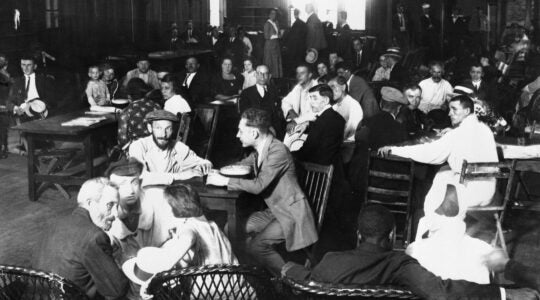DENVER (JTA) — In 1943, American psychologist Abraham Maslow wrote a groundbreaking paper titled “A Theory of Human Motivation” in which he proposed his now famous “hierarchy of needs.”
Most often, the hierarchy is represented as a pyramid with an individual’s most basic physiological needs located at the bottom. As the needs depicted at each ascending level of the pyramid are met (safety, love/belonging, esteem and, ultimately, self-actualization), the individual’s priorities can shift to focus on meeting the needs of the next level.
In times of crisis, agencies providing humanitarian aid use this pyramid to help guide them in their relief efforts. This enables the agencies to not only approach their efforts in a more focused and strategic manner, but also to make a greater impact when and where help is needed most.
The result is a more efficient and effective delivery of services, which is important to both the agencies providing the aid and those receiving it.
The current global economic crisis is taking a heavy toll on many across our local community — from nonprofit organizations to the people in need they serve, to their donors who may not be struggling to put food on the table but are certainly feeling the situation’s effects psychologically.
With donors needing to become more judicious about their charitable giving in this economy, a hierarchical approach to philanthropy could be applied as a strategy to meeting the needs of those affected by the economic downturn:
1. The base of the Charity Pyramid calls for donors to support the annual campaigns of their favorite causes. These campaigns provide the vital operating funds that help nonprofits “keep the lights on” so they can continue to meet the needs of those they serve, in good times and in bad.
2. The second level suggests that donors create endowments to ensure that the causes they care about most are provided for now and for generations to come. This can be accomplished either by funding the endowment now, which will require funds that because of the economic downturn may not be readily available, or by establishing a bequest in their wills, which will cost little now but will return huge dividends for the community later.
3. The third level shifts the focus to funding new programs that help address currently unmet needs. In a down economy, new initiatives can be considered a lower priority as they are “nice to have” but not necessarily “need to have.”
4. Finally, the top level asks donors to support capital campaigns last. This does not include funding deferred maintenance — keeping the physical infrastructure of our communal institutions intact is particularly important during challenging times. However, it does refer to funding physical upgrades and large capital projects, which may be important to meeting the community’s needs down the line but are not necessarily critical in the immediate future.
Many nonprofits across our community are struggling to meet the increased needs of the people they serve in the face of rising costs and declining revenues. What makes our challenge even greater is that our donors — the very people we would normally turn to in times of distress — are feeling the pressure as much, if not more, than we are.
If we take a page from Maslow’s "hierarchy of needs" and work with our most loyal and generous benefactors to help focus their philanthropy on meeting the most basic needs first — feeding the hungry, sheltering the homeless, educating the young, and ensuring the health and safety of those in-need — we will be better able to serve our community during these trying times, perhaps even more efficiently and effectively than we have before.





